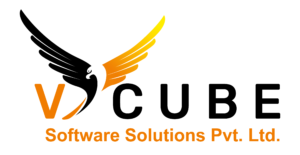FULL STACK . NET DEVELOPER INTERVIEW QUESTIONS PART 1
Interview Questions
1.What is Full Stack Development, and how does it differ from other types of development?
- Full-stack development entails simultaneously constructing the front end and back end of a web application or website. There are three layers to this process:
- Layer of presentation (frontend part responsible for user experience)
- Layer of business logic (backend part refers to the server-side of the application)
- Layer of the database
2.What are the responsibilities of full-stack web developers?
- A Full Stack Web Developer is someone who is experienced in both client and server software development. They understand how to programme browsers, databases, and servers in addition to CSS and HTML.
- You must grasp the web development components – front end and back end – to completely know the function of Full Stack developer.
- The front end is the part of the application that the user sees and interacts with, whereas the back end contains the business logic.
3.Name a few Full Stack developer tools?
- Full-stack developers employ a variety of technologies to make development more accessible and efficient, including:
- Backbone
Visual Studio Code is a graphical programming environment.
WebStorm
Slack \sElectron
TypeScript \sCodePen \sGitHub
4.What are the requirements for becoming a full-stack developer?
- A Full Stack developer should be conversant with the following topics:
- Basic languages – HTML, CSS, and SQL are examples of basic languages that must be mastered.
Bootstrap, AngularJS, VueJS, ReactJS, JavaScript, TypeScript, Python, Ruby, and PHP are front-end frameworks.
Express, Django, NodeJS, and Ruby on Rails are examples of back-end frameworks.
MySQL, SQLite, Postgres, MongoDB, Cassandra, Apache Storm, and Sphinx are examples of databases.
Git, Machine Learning, SSH, Linux Command, Data Structures, and Character Encoding are recommended as additional abilities.
5.What is Pair Programming and how does it work?
- Pair Programming is when two programmers share a single workstation, as the name implies. The code is written by a single programmer, known as the “driver,” who sits at the keyboard. The “navigator,” the other programmer, looks over each line of code, spell checks it, and proofreads it. Every few minutes, programmers will switch roles and vice versa.
6.What exactly is CORS?
- CORS (cross-origin resource sharing) is a technique that uses additional HTTP headers to instruct browsers to serve a web application from a single origin. CORS connects to a variety of web resources across several domains. When a web script accesses a resource with an external origin (protocol, domain, or port) from its own, it can use CORS.
7.What is Inversion of Control (IoC) and how does it work?
- Inversion of Control (IoC) is a generic term used by software developers to describe a method for decoupling system components and levels. Object-oriented programming is where it’s most commonly employed. With the help of Inversion of Control, control of objects or portions of a programme is moved to a framework or container. Various approaches, such as the service locator pattern, strategy design pattern, factory pattern, and dependency injection, can be used to do this.
8.What is Dependency Injection, and how does it work?
- IoC is implemented using the Dependency Injection design paradigm. Rather than the object itself injecting items or connecting objects with other objects, the container does so. There are three different sorts of classes involved.
- The service class determines the client class.
The client class is served by the service class.
The injector class injects objects from the service class into the client class.
9.What is Continuous Integration, and how does it work?
- Continuous Integration (CI) is a method of integrating code into a shared repository on a frequent basis in order to spot problems early. Before integrating new code, the CI process uses automated techniques to verify its accuracy. Every check-in is verified by automated builds and tests.
10.What exactly is multithreading and how does it work?
- The fundamental goal of multithreading is to run numerous threads of code at the same time in order to maximise CPU utilisation. It lets many threads to exist within the context of a process, allowing them to run independently while sharing process resources.
11.What distinguishes GraphQL from REST?
- This is a challenging question to answer, but a smart developer should be able to do it without difficulty. The main distinction is that GraphQL does not work with dedicated resources. The manner you retrieve a resource has nothing to do with its description. Everything in a graph is related and may be queried to meet application requirements.
12.Make a list of methods to improve the speed and performance of your website.
- There are numerous options for optimising your website for maximum performance:
Reduce the number of HTTP requests.
Make use of CDNs and delete any files or scripts that are no longer in use.
Compress images and optimise files.
Caching in the browser.
CSS3 and HTML5 should be used.
Reduce the size of JavaScript and Style Sheets.
Caches should be optimised.

Quick Links
- Home
- About Us
- Courses
- Contact Us
Other Pages
Contact Info
- 2nd Floor Above Raymond’s Clothing Store KPHB, Phase-1, Kukatpally, Hyderabad
- +91 7675070124, +91 9059456742
- contact@vcubegroup.com
